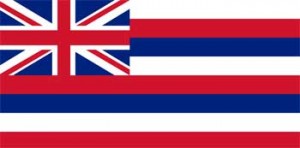Hawaii Emergency Vehicle Light State Statutes
 The state of Hawaii has many types of emergency vehicles, including police cars, fire trucks, ocean safety officers, and more. All of these vehicles have identifying markers and lighting that help the general public to recognize these vehicles and know when to move out of their way. There are also various lighting laws in place for utility vehicles, tractors, construction trucks, and any other type of vehicle that might require extra caution from the motorists around them. In Title 17 of Hawaii's statutes, the state clearly states their instructions for lighting on all types of emergency vehicles. You can discover the color and positioning for all types of emergency vehicle lights by reading this helpful guide.
The state of Hawaii has many types of emergency vehicles, including police cars, fire trucks, ocean safety officers, and more. All of these vehicles have identifying markers and lighting that help the general public to recognize these vehicles and know when to move out of their way. There are also various lighting laws in place for utility vehicles, tractors, construction trucks, and any other type of vehicle that might require extra caution from the motorists around them. In Title 17 of Hawaii's statutes, the state clearly states their instructions for lighting on all types of emergency vehicles. You can discover the color and positioning for all types of emergency vehicle lights by reading this helpful guide.
Police lights
Hawaii's police car lighting laws are a little different because they do not have a statewide police agency or any individual city police agencies. Instead, they leave jurisdiction and regulation up to individual counties. County law enforcement vehicles are one of the only vehicles allowed to use blue emergency lights within the state of Hawaii. The Hawaii state statute that allows these vehicles to use blue lighting is statute 291-31.5. Most police cars within Hawaii will operate with blue and red flashing police lights on the top of the car. Some may also have blue police lights installed along their tail lamps or headlamps. Cars may use any blue and red, blue and white, or plain blue flashing lights. These vehicles must be authorized and approved by the chief of police for the county the vehicle operates in before they can use blue lights.
Fire truck lights
Like police departments in Hawaii, the fire departments are run by the counties in Hawaii, not the state or the city. Fire trucks in Hawaii use a wide combination of lighting positions and colors. They traditionally use a bar of red and yellow flashing lights at the top, along with auxiliary flashing yellow lights along the sides. However, not every truck uses the same lighting system. There is little regulation beyond statute 291-31.5 that allows them to use red flashing lamps. Some trucks may choose to supplement their lighting with white strobe lights or white revolving lights.
Volunteer fire fighter lights
According to statute 291C-1, a volunteer firefighter vehicle counts as an authorized emergency vehicle if they are approved by the county council. Therefore, volunteer firefighters in the state of Hawaii may use red emergency lights. However, they are only allowed to use these lights when responding to a fire, and they must first be authorized by a county council. Some volunteer firefighters may choose to add yellow or white auxiliary lamps to their vehicles. This can help to make the vehicle more noticeable when it is responding to a fire.
Ambulance lights
The ambulance trucks in Hawaii identify themselves with a combination of red and white lighting. There is no specific statute that requires these colors, but ambulances use them because they are bold and easily recognizable. The typical placement will be one red and one white light at each corner of the box on the back of the ambulance truck. In order to display flashing emergency lights, a vehicle must be one of the listed options in statute 291C-1. This is primarily ambulances, but it may also apply to certain organ transport and other medical vehicles.
Tow trucks lights
Unlike many other states, Hawaii has no specific regulations focusing on tow truck lighting. This allows tow truck drivers many different options for their lights. The only rule is statute 291-31.5 which says tow trucks cannot use lamps, reflectors, or illuminating devices in shades of blue or blue and red. The one exception to this is the tow trucks run by the department of public safety, but they have to get an approval from the director of public safety before using a blue light. Since most tow trucks are not part of the public safety department, they will use flashing lights in other shades to alert vehicles. The most common color is amber, but some may use white or yellow.
Construction vehicle lights
Construction vehicles typically fall under the category of "unspecified motor vehicles" because even the smaller construction equipment tends to be run by a motor. Therefore, they must follow the lighting code of statute 291-25 anytime they are on the highway after sunset and before sunrise. This statue lays out all the head lamp and tail lamp regulations, such as mounted lamps that are no more than 54 inches above the road and lamps that are visible form 200 feet. Many construction vehicles choose to go beyond these minimal lighting requirements and add auxiliary lamps for more visibility. Any signal lights they install must not be blue or red, and any spotlights they use should be pointed at the ground instead of shining in the eyes of drivers.
Utility vehicle lights
 Utility vehicles may be vehicles that are publicly or privately owned, and they include vehicles used for gas, water, electricity, cable, and more. The state of Hawaii does not provide any specific regulation for lighting on utility vehicles beyond the standard white headlamps and red tail lamps required for all motor vehicles in statute 291-25. Many utility companies choose to go beyond basic requirements and add extra flashing lights to warn drivers that may be passing or following a utility truck. These lights can be white, yellow, amber, or any other shade besides blue or red.
Utility vehicles may be vehicles that are publicly or privately owned, and they include vehicles used for gas, water, electricity, cable, and more. The state of Hawaii does not provide any specific regulation for lighting on utility vehicles beyond the standard white headlamps and red tail lamps required for all motor vehicles in statute 291-25. Many utility companies choose to go beyond basic requirements and add extra flashing lights to warn drivers that may be passing or following a utility truck. These lights can be white, yellow, amber, or any other shade besides blue or red.
Pilot vehicle light
Hawaii does not have many laws regarding oversized loads. The only official requirement is statute 291-28 that states that vehicles with an oversized load need to display a red light visible from the rear and have an escort vehicle to call people's attention to the oversized load. Since Hawaii's laws about lighting color are very lax, escort vehicles are left with the option of adding extra colored lights if desired. Many vehicles will choose flashing amber or white LED strobe lights to make their vehicle more noticeable without breaking statute 291-31.5 that outlaws the use of red or blue light.
Security Vehicle Lights
As statute 291-31.5 states, the only prohibited lighting color for vehicles are the blue lights or blue and red flashing lights reserved for emergency vehicle lights. Therefore, security vehicles cannot operate with lighting in these shades. Statute 291-30 also prohibits the use of a spotlight that shines in the eyes of approaching vehicles. Security vehicles can choose to use any sort of auxiliary lighting they desire as long as it does not violate these two rules. These vehicles often choose to use flashing yellow or amber lights. Many counties in Hawaii have public security and safety vehicles used to alert people of dangers. These vehicles can use a flashing red light if they are part of the Department of Emergency Management's volunteers and get approval from the city for a light.
For more information about what lights may be available to you, we suggest calling your State Highway Patrol office at: 808-587-3627
*Please note that these numbers are what we are currently able to find and the numbers may have changed since this listing.
Disclaimer: The emergency vehicle light state statute guide was created by Extreme Tactical Dynamics as a guide and reference. We make no claim to the accuracy or validity of this guide. This guide was written to the best of our knowledge and has been provided to our customers as a courtesy ONLY! The information in this guide is our interpretation of the law as we have read it. We cannot be held responsible for any errors as this is only our interpretation of the law and the laws are constantly changing. We cannot be held liable or responsible for any errors and recommend that our customers refer to their local authorities to confirm the particular statue that governs their use of emergency vehicle lights.
 Facebook
Twitter
Google+
Instagram
YouTube
Facebook
Twitter
Google+
Instagram
YouTube


